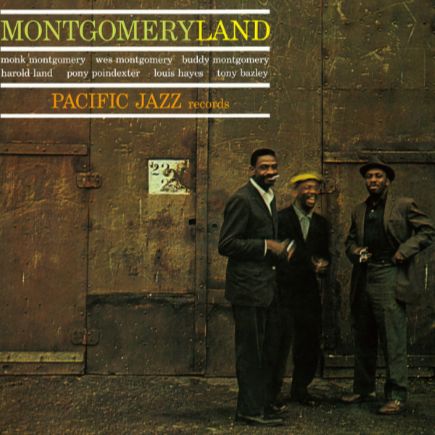Falling in Love with Love: du théâtre musical au jazz, une transformation magistrale
Issue de la comédie musicale The Boys from Syracuse, créée à Broadway en 1938 avec une musique de Richard Rodgers et des paroles de Lorenz Hart, Falling in Love with Love est d’abord interprétée par Muriel Angelus. Si elle ne s’impose pas immédiatement comme un standard du jazz, la chanson finit par s’y inscrire durablement, séduisant de nombreux musiciens par sa richesse harmonique et mélodique.
Ancrée dans le style swing des années 1930, la pièce offre un terrain d’improvisation particulièrement inspirant. Dès les premières reprises jazz, les artistes reconnaissent le potentiel de ses harmonies sophistiquées et de son rythme enjoué, reflets du talent mélodique de Richard Rodgers.
Mais c’est aussi le texte de Lorenz Hart qui confère à cette chanson toute sa profondeur: sous une apparente légèreté, il dévoile une désillusion amère face à l’idéal romantique, introduisant une tension émotive subtile entre paroles et musique. Falling in Love with Love incarne parfaitement cette capacité du jazz à s’approprier le répertoire de Broadway, à en explorer les recoins et à en révéler de nouvelles dimensions.
Wes Montgomery, la jeunesse d’un style en devenir
Enregistrée le 1er octobre 1959 à Los Angeles pour l’album Montgomeryland, la version de Falling in Love with Love témoigne de l’émergence d’un langage musical en pleine formation, celui d’un Wes Montgomery déjà maître de son instrument, mais encore ancré dans la spontanéité et la fraîcheur des débuts. Entouré de ses frères Buddy (piano) et Monk (basse), ainsi que de Pony Poindexter au saxophone alto et de Louis Hayes à la batterie, le guitariste livre une interprétation où la rigueur du hard bop se marie à une chaleur expressive propre à son jeu.
Montgomery et son groupe proposent ici une version énergique et limpide, portée par un swing souple et un sens mélodique affirmé. Dès l’exposition du thème, le guitariste impose un son distinctif: un toucher feutré obtenu grâce à l’usage du pouce, un phrasé d’une grande fluidité et une articulation impeccable. Sa manière d’aborder le standard est déjà singulière — à la fois respectueuse de la forme et audacieusement personnelle.
Buddy Montgomery apporte à l’ensemble une clarté harmonique raffinée, construisant un dialogue constant avec la guitare, tandis que Monk, à la basse, offre un soutien chaleureux et élastique. Pony Poindexter, dont le timbre vif et pénétrant contraste élégamment avec la rondeur du son de Wes, insuffle une dimension aérienne à la lecture du thème. Quant à Louis Hayes, son jeu vif et équilibré, entre légèreté et précision, maintient une tension rythmique d’une souplesse exemplaire.
Falling in Love with Love: de la comedia musical al jazz, una transformación magistral
Procedente del musical The Boys from Syracuse, estrenado en Broadway en 1938 con música de Richard Rodgers y letra de Lorenz Hart, Falling in Love with Love fue interpretada originalmente por Muriel Angelus. Aunque no se convirtió de inmediato en un estándar del jazz, la canción acabó formando parte esencial del repertorio, atrayendo a numerosos músicos por su riqueza armónica y melódica.
Marcada por el estilo swing de los años treinta, la pieza ofrece un terreno fértil para la improvisación. Desde las primeras versiones en clave jazz, los intérpretes reconocieron el potencial de sus armonías sofisticadas y su ritmo animado, características del genio melódico de Rodgers.
Pero también es el texto de Hart lo que da profundidad a la canción: bajo un título que sugiere ligereza, se esconde una reflexión amarga sobre el amor romántico, creando una tensión fascinante entre música y letra. Falling in Love with Love representa a la perfección la capacidad del jazz para apropiarse del repertorio de Broadway, explorarlo con libertad y revelar nuevas dimensiones expresivas.
Wes Montgomery, la juventud de un estilo en formación
Grabada el 1 de octubre de 1959 en Los Ángeles para el álbum Montgomeryland, la versión de Falling in Love with Love refleja el surgimiento de un lenguaje musical en plena construcción: el de un Wes Montgomery ya dueño absoluto de su instrumento, pero aún anclado en la espontaneidad y la frescura de sus comienzos. Rodeado de sus hermanos Buddy (piano) y Monk (contrabajo), así como de Pony Poindexter al saxofón alto y Louis Hayes a la batería, el guitarrista ofrece una interpretación en la que la disciplina del hard bop se funde con la calidez expresiva que define su estilo.
Montgomery y su grupo proponen aquí una versión enérgica y transparente, impulsada por un swing flexible y un sentido melódico seguro. Desde la exposición del tema, el guitarrista impone un sonido inconfundible: un toque aterciopelado logrado gracias al uso del pulgar, un fraseo fluido y una articulación impecable. Su forma de abordar el estándar resulta ya única —respetuosa con la estructura, pero audazmente personal.
Buddy Montgomery aporta al conjunto una claridad armónica refinada, estableciendo un diálogo constante con la guitarra, mientras Monk, al contrabajo, ofrece un apoyo cálido y elástico. Pony Poindexter, cuyo timbre vivo y penetrante contrasta elegantemente con la redondez del sonido de Wes, añade una dimensión aérea a la lectura del tema. En cuanto a Louis Hayes, su toque ágil y equilibrado, entre ligereza y precisión, mantiene una tensión rítmica de flexibilidad ejemplar.
Falling in Love with Love: dal teatro musicale al jazz, una trasformazione magistrale
Tratta dal musical The Boys from Syracuse, andato in scena a Broadway nel 1938 con musiche di Richard Rodgers e testi di Lorenz Hart, Falling in Love with Love fu interpretata per la prima volta da Muriel Angelus. Sebbene non divenne subito uno standard del jazz, la canzone trovò progressivamente il suo posto, attirando numerosi musicisti grazie alla sua ricchezza armonica e melodica.
Imbevuta dello stile swing degli anni Trenta, la composizione si presta particolarmente all’improvvisazione. Fin dalle prime rivisitazioni jazzistiche, gli interpreti ne colsero il potenziale: armonie raffinate, ritmo vivace, ed un impianto melodico tipico del talento di Rodgers.
Ma è soprattutto il testo di Hart a conferirle profondità emotiva: dietro un titolo apparentemente leggero, si cela una velata disillusione verso l’amore romantico, generando una tensione interessante tra parole e musica. Falling in Love with Love rappresenta un esempio ideale della capacità del jazz di assorbire il repertorio di Broadway, reinventandolo con libertà espressiva.
Wes Montgomery, la giovinezza di uno stile in formazione
Registrata il 1º ottobre 1959 a Los Angeles per l’album Montgomeryland, la versione di Falling in Love with Love testimonia la nascita di un linguaggio musicale in piena evoluzione: quello di un Wes Montgomery già padrone del proprio strumento, ma ancora ancorato alla spontaneità e alla freschezza degli esordi. Circondato dai fratelli Buddy (pianoforte) e Monk (contrabbasso), insieme a Pony Poindexter al sax contralto e Louis Hayes alla batteria, il chitarrista offre un’interpretazione in cui la rigore del hard bop si fonde con il calore espressivo tipico del suo tocco.
Montgomery e il suo gruppo propongono qui una versione energica e limpida, sostenuta da uno swing flessibile e da un senso melodico deciso. Fin dall’esposizione del tema, il chitarrista impone un suono inconfondibile: un tocco vellutato ottenuto grazie all’uso del pollice, un fraseggio di grande fluidità e un’articolazione impeccabile. Il suo modo di affrontare lo standard è già singolare — rispettoso della forma, ma audacemente personale.
Buddy Montgomery dona all’insieme una chiarezza armonica raffinata, costruendo un dialogo costante con la chitarra, mentre Monk, al contrabbasso, offre un sostegno caldo ed elastico. Pony Poindexter, il cui timbro vivo e penetrante contrasta elegantemente con la rotondità del suono di Wes, aggiunge una dimensione aerea all’interpretazione del tema. Louis Hayes, con il suo drumming agile ed equilibrato, sospeso tra leggerezza e precisione, mantiene una tensione ritmica di notevole flessibilità.
Falling in Love with Love: from musical theater to jazz, a masterful transformation
Taken from the Broadway musical The Boys from Syracuse, which premiered in 1938 with music by Richard Rodgers and lyrics by Lorenz Hart, Falling in Love with Love was first performed by Muriel Angelus. Though it didn’t immediately become a jazz standard, the song gradually earned that status, attracting jazz musicians with its harmonic and melodic richness.
Rooted in the swing style of the 1930s, the piece offers a fertile ground for improvisation. From the earliest jazz renditions, performers recognized its potential: subtle harmonies, a lively rhythm, and a melodic structure that showcases Rodgers’s brilliance.
But it is also Hart’s lyrics that give the piece its depth. Beneath the lightness suggested by the title lies a note of disillusionment with romantic love, adding a subtle tension between the words and the music. Falling in Love with Love is a prime example of how jazz has embraced and reinterpreted the Broadway songbook.
Wes Montgomery, the youth of a style in the making
Recorded on October 1, 1959, in Los Angeles for the album Montgomeryland, the version of Falling in Love with Love captures the emergence of a musical language in full bloom—one belonging to a Wes Montgomery already in command of his instrument, yet still grounded in the spontaneity and freshness of his early years. Surrounded by his brothers Buddy (piano) and Monk (bass), along with Pony Poindexter on alto saxophone and Louis Hayes on drums, the guitarist delivers a performance where the rigor of hard bop meets the expressive warmth that would become his signature.
Montgomery and his group offer an energetic and transparent reading, propelled by a supple swing and a strong melodic sense. From the very first statement of the theme, the guitarist establishes a distinctive sound: a velvety touch achieved through the use of his thumb, fluid phrasing, and impeccable articulation. His approach to the standard is already unmistakable—respectful of form, yet boldly personal.
Buddy Montgomery brings refined harmonic clarity, engaging in a constant dialogue with the guitar, while Monk’s bass provides a warm and elastic foundation. Pony Poindexter, whose bright and penetrating tone contrasts elegantly with Wes’s rounded sound, adds an airy dimension to the interpretation. As for Louis Hayes, his agile and balanced playing—poised between lightness and precision—maintains rhythmic tension with exemplary flexibility.


